German Shepherd Puppy Crate Training (The Right Way!)
German Shepherds are lovable, wonderful dogs, but they can also be a handful especially when they’re puppies. If you’d like to crate train your German Shepherd puppy, it isn’t as difficult as you might think. Indeed, once you take into consideration the personality of your German Shepherd puppy and keep in mind some basic tips, the process can be simple and productive from day one.
Is Crate Training a Good Thing?
The first thing you need to know is that for the most part, keeping your dog in a crate is not a bad thing.
In fact, a crate can help your puppy feel more secure and safe in the world around it. Of course, just like anything else that has to do with your puppy, it can be misused.
Putting your puppy in a crate should never be used as a punishment for any type of behavior, and most importantly, puppies and dogs should never be left in a crate all day long or for extra-long periods of time.
German Shepherd dogs require a ton of exercise and play time!
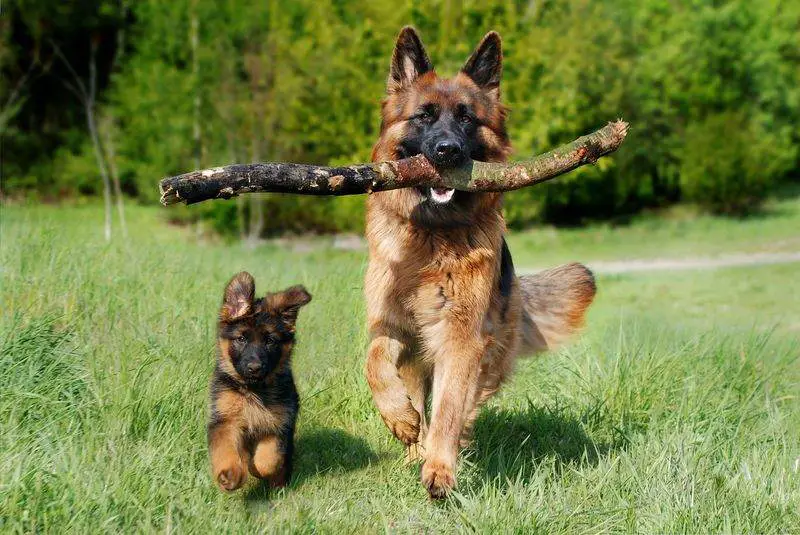
This is especially true for puppies, who are extremely active and energetic and who need ways to use that energy so they don’t get bored and start getting into trouble.
Just why is puppy crate training a good thing? For one, spending time in their crate can help puppies and dogs in a lot of ways, including:
- It makes them feel more secure
- It is a good way to transport your puppy from Point A to Point B
- It makes house-training a little easier
- It can protect your puppy
- It can protect your belongings
It is also a great way to give yourself a little break from constantly caring for an overly active puppy.
Again, you don’t want to keep your puppy in there for too long, but it can definitely be a great solution when you’re tired or busy and just need a small amount of time away from your puppy.
What Type of Crate Should You Choose?
Puppy crates for German Shepherds come in three main types: wire, fabric, and plastic.
Each has its own advantages and disadvantages, but most people end up choosing a wire crate because they are strong, long-lasting and essentially have nothing that the dog can destroy while it’s in there.
You also want to make sure your dog can stand up and move around in it without being uncomfortable while making sure it isn’t too big so that it doesn’t use it to poop on one side and take a nap on the other!
Most experts recommend purchasing a 42- or 48-inch crate because this allows the puppy to grow without the need to buy another crate regularly.
Make sure the crate you choose has a divider because this will allow it to “grow” with your puppy and allow it to be comfortable as it grows.
Your next step for successful puppy crate training is to include a few items in the crate that it’ll need, including a crate mat (link to Amazon). You want one that isn’t too thick or easy to destroy. Also, toss in some of your dog’s favorite toys and a few treats.
You should also go ahead and get a cover for your crate because there will be times when this one item will save you a lot of headaches.
How to Get Started With Puppy Crate Training
First of all, you want your puppy to learn to love its crate, not think of it as a punishment or something negative.
Therefore, you want to introduce your puppy to its crate slowly. Never make your puppy feel like you’re forcing it to go into the crate.
Put it in a room your puppy is familiar with and let it explore it and sniff around so that it gets familiar with it. If your puppy doesn’t go inside of the crate, put a few treats or toys in there and see if that works.
Most of all, give your puppy some time. This is not a step you should rush through because the crate could turn into something the puppy dreads instead of loves.
Show your puppy the crate and encourage it to explore it, but if it seems uninterested simply put it off until another time.
Stand in the back of your puppy and let it explore the crate on its own time and at any speed it wishes.
Once your puppy is comfortable enough to go in and out of the crate on its own, you can proceed to the next step.
Start pairing your puppy’s mealtime with the crate, and begin by placing its bowl of food right outside of the crate. Once your puppy’s comfortable with that, you can move the bowl into the crate, but close to the door of the crate.
Afterward, simply move the bowl a little further to the back of the crate each time your puppy uses it to enjoy its meal.
Rewarding Him Is Important
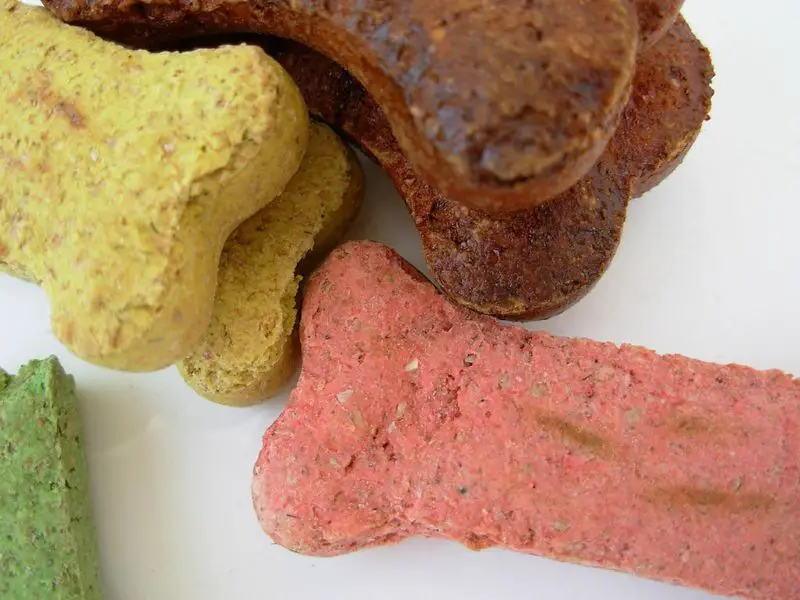
You should also use positive reinforcement during this “training” period.
When your puppy successfully spends even a small amount of time in the crate, give it a training treat (link to Amazon) and some verbal praise.
Remember to take it slow every time. If your puppy starts to whine at any point, it might be a sign that you’re moving too fast.
When the puppy gets to the point where it is eating its entire meal while staying inside of the crate, you can start closing the door of the crate until your puppy is finished with its meal.
Then, you can start leaving it shut for a few minutes after the meal is over.
Continue adding a few minutes each time you close the door and leave your puppy in there so that it gets used to being in there even when it isn’t mealtime.
One word of caution, however.
If your puppy does start to whine and you feel like it needs to be let out of the crate, wait until it stops whining to let it out.
This way, your puppy won’t learn that a simple whine is enough to get it let out of the crate. This is a very important rule when puppy crate training your German Shepherd puppy!
What About Longer Periods of Time?
Once the puppy shows no sign of being apprehensive or scared about being put in its crate, you can start lengthening the time it stays in there.
When you close the door, stay with it for a few minutes, then leave the room for a while.
When you’re ready to let the puppy out of the crate, go back in the room and sit next to the crate for a few minutes, then open the door and let it out.
As you can see, it takes a lot of time to crate train your puppy, but it is important that you do it slowly for it to be effective.
How long will it take before you can leave your puppy in its crate all night long or for a long period of time? Each dog is different so that’s a hard question to answer. But you have to take your time or the process simply won’t work.
As far as crating when you leave to run errands or even overnight, your puppy will tell you when it’s ready for that.
You certainly don’t want to put your puppy in the crate for an hour one day and for eight hours the next. When you extend the amount of time you leave your puppy in the crate, do it slowly and add just a few minutes each time.
Again, it’s better to go slowly with each step to make it a success because the last thing you want is to start all over again at some point.
If you like, you can create a schedule for your puppy so that it gets used to being in the crate part of the day and out of it other parts of the day.
This can help both you and your puppy learn how to handle the crating process so that both of you are happy with the results.
Also, keep in mind that when you’re crate training your puppy, you should never:
- Use the crate as a punishment
- Scold your puppy when it’s in the crate
- Reward its whining by letting it out of the crate as soon as it whines
- Leave your puppy in there for more than four hours at a time
- Lose your patience with your puppy when it takes longer to get used to the crate than you thought it would
Patience and consistency are the two most important parts of puppy crate training because after all, each dog has their own agenda and, therefore, it will never take two puppies the same amount of time to get used to being in a crate.
Reward your puppy with training treats when it does it correctly and don’t punish your puppy when it doesn’t.
If you think there’s a serious reason why your puppy isn’t getting used to its crate, you should take your puppy to the vet so that any problems can be taken care of.
Your German Shepherd puppy is smart and eventually, it will catch on!




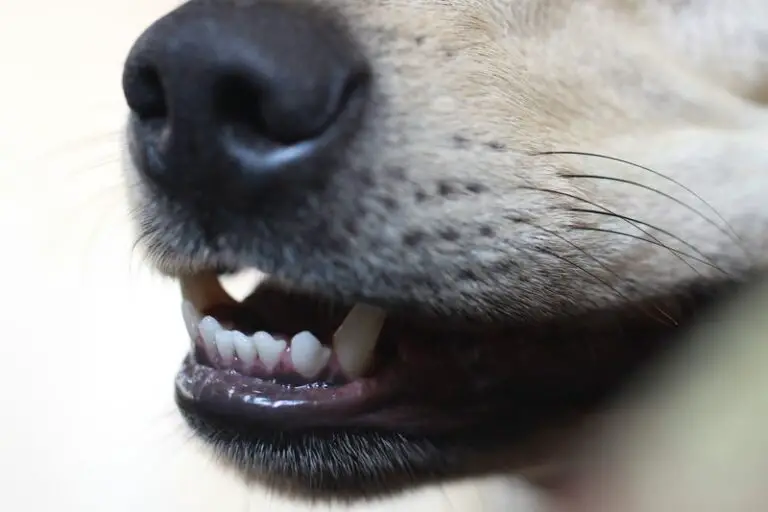
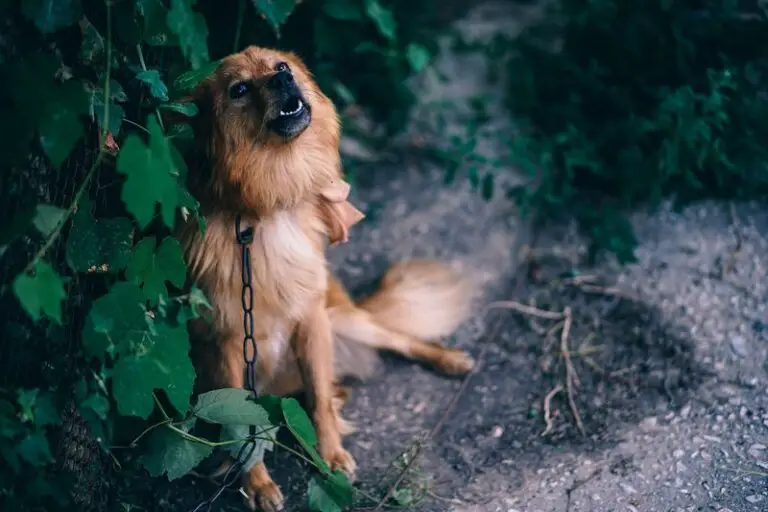
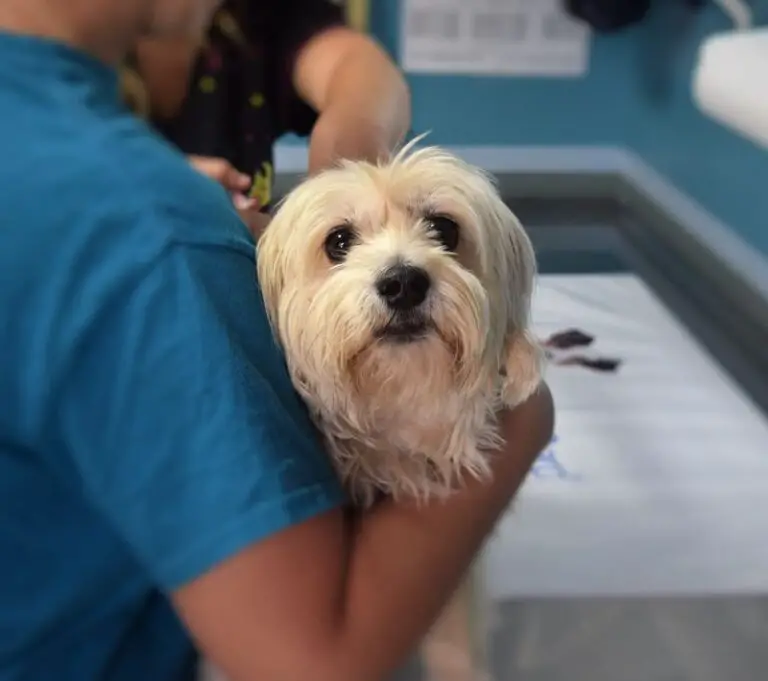

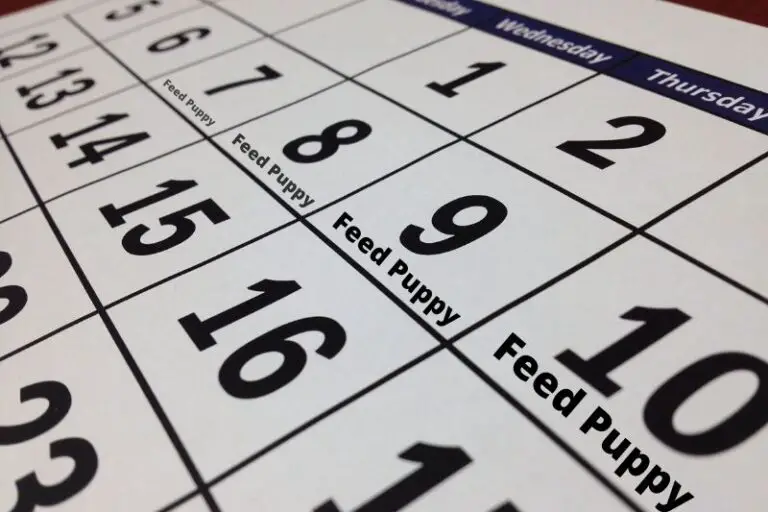
![How to Get A Dog to Drink Water After Surgery [Helpful DIY Guide]](https://smarterpuptraining.com/wp-content/uploads/2020/10/how-to-get-your-dog-to-drink-water-after-a-surgery-1-768x512.jpg)